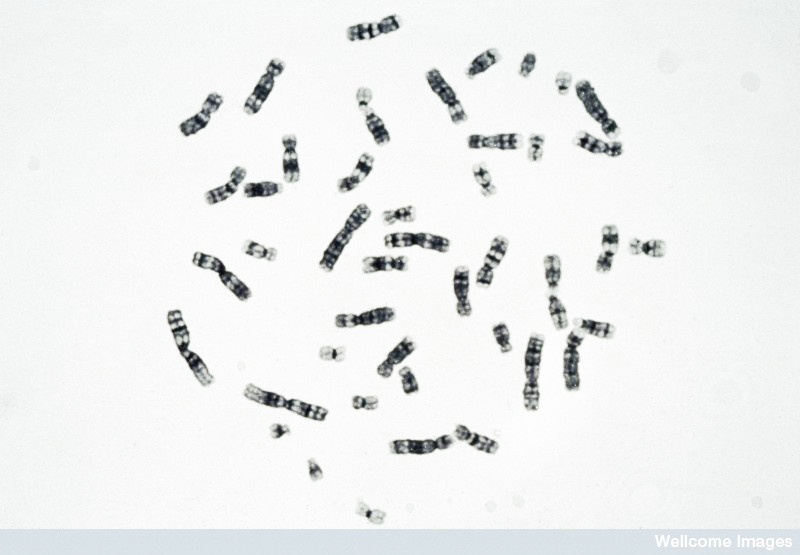Professors Richard Houlston and Gareth Morgan identified a brand new genetic mechanism that raises the risk of cancer via a domino effect on DNA – with one gene fault triggering a second, cancer-causing mutation. The team showed that patients with a mutation in the CCND1 gene were 80 per cent more likely to develop a particular sub-type of myeloma, a blood cancer, than those without the mutation.
The sub-type is known to be triggered by a specific chromosomal translocation – a type of DNA breakage and rearrangement – designated by the code t(11;14). This sub-type, which affects about a fifth of myeloma patients, involves the translocation forming a mutant piece of DNA that drives cancer by activating several genes. The study was the first time a genetic mutation has been linked to a specific chromosomal mutation.
The study assessed the DNA of 1,655 patients with myeloma and compared them with people in the general population, in order to explore whether they had inherited genetic faults that had increased their risk of developing the disease.
Researchers hailed the finding as a “very important discovery” that opens up new avenues for cancer treatment and prevention.
Professor Richard Houlston, Professor of Molecular and Population Genetics at the ICR, said: “We’ve uncovered a new way in which genetics can raise the risk of developing cancer, in which one gene fault appears to trigger another – in a domino-like effect.
“It’s the first time anyone has identified a specific gene fault that raises the risk of developing a second specific type of DNA damage. Not only is the discovery valuable for our understanding of multiple myeloma, but it also demonstrates the value of studying specific genetic sub-types of cancer, rather than grouping them all together as one disease.”
Professor Gareth Morgan, Head of Molecular Haematology at the ICR and Head of the Myeloma Unit at The Royal Marsden, said: “This is a very important discovery, which opens out our understanding of cancer genetics and gives us new avenues for treatment and prevention.
“Now that we have found a genetic risk factor for a particular sub-type of multiple myeloma, I’m hopeful we can design more targeted treatments for the people who develop it. In cancer research we tend to group different sub-types together, but this research proves we need to move away from this approach and investigate sub-types at a molecular level.”
Weinhold, N., Johnson, DC., Chubb, D., Broderick, P., Goldschmidt, H., Hemminki, K., Foersti, A., B, C., Hosking, F., Ma, Y., et al. Vogan, K., (2013) The CCND1 G870A polymorphism is a risk factor for t(11;14)(q13;q32) multiple myeloma. Nature Genetics, pp.522-U87doi:10.1038/ng.2583
The study was funded by a number of organisations, including Myeloma UK, Leukaemia & Lymphoma Research, Cancer Research UK and via the NIHR Biomedical Research Centre at The Royal Marsden NHS Foundation Trust and The Institute of Cancer Research.
